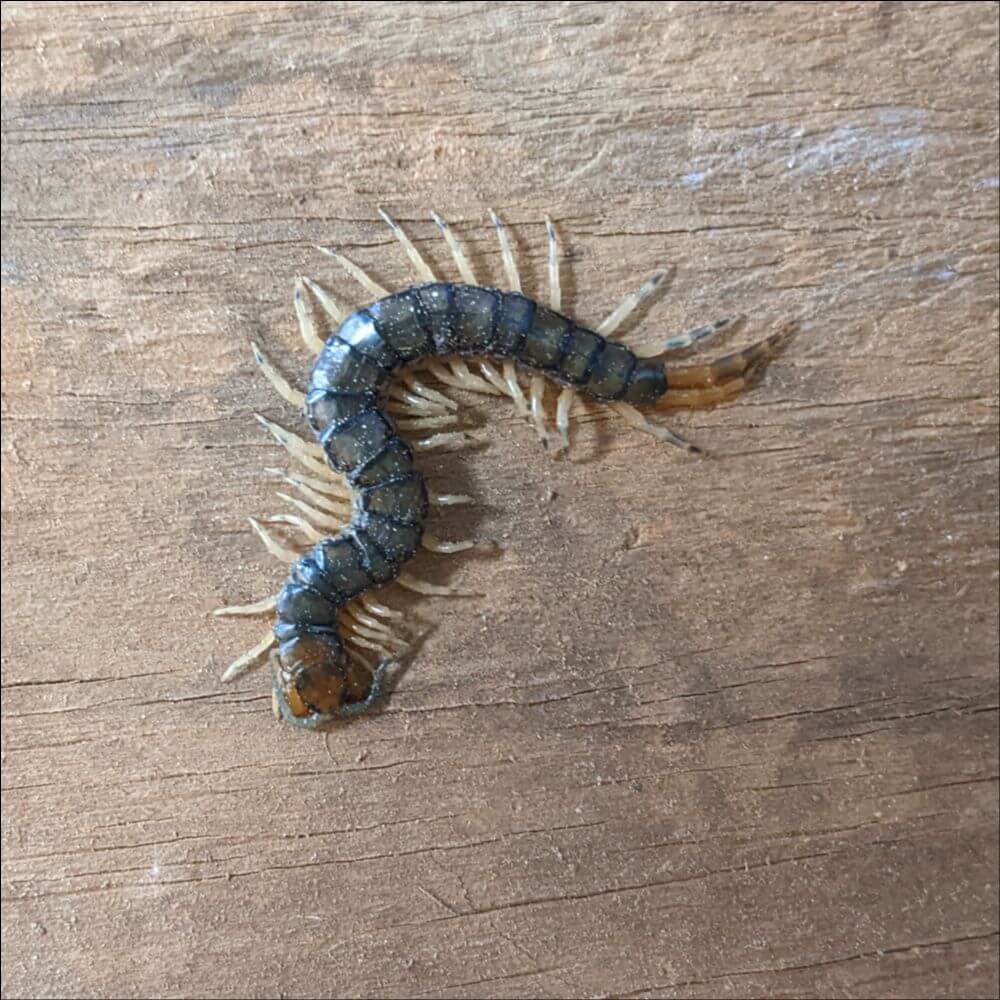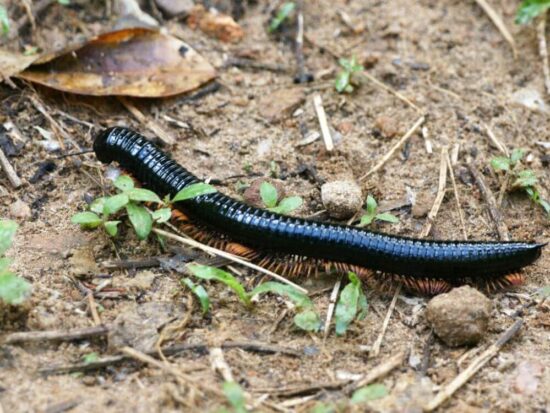Have you ever seen a creepy crawly with way too many legs scurrying across your basement floor and wondered what it was? If so, you’re not alone.
Millipedes and centipedes are two creatures that people mix up all the time. They both have tons of legs and long, segmented bodies, but they’re actually quite different from each other. Even more important, many people want to know if these multi-legged critters are dangerous. Let’s break down everything you need to know about millipedes and centipedes, including whether you should worry if you spot one in your home.
What Are Millipedes and Centipedes?
First things first: millipedes and centipedes are not insects, even though people often think they are. They’re actually arthropods, which is the same family that includes insects, spiders, and crabs. Specifically, both belong to a group called Myriapoda, which basically means “countless feet” in Greek.
Millipedes have been around for a really long time. Scientists have found fossils showing that millipedes were some of the first animals to live on land, dating back over 400 million years. That’s way before dinosaurs even existed!
Today, there are about 12,000 known species of millipedes and roughly 8,000 species of centipedes living around the world. Despite their names (millipede means “thousand feet” and centipede means “hundred feet”), no millipede actually has 1,000 legs and no centipede has exactly 100 legs.
Key Physical Differences Between Millipedes and Centipedes
The easiest way to tell millipedes and centipedes apart is by looking at their legs. Millipedes have two pairs of legs on most body segments, while centipedes have just one pair per segment. This might sound like a small detail, but it makes a big difference in how they look and move.

Another major difference is where those legs are positioned. Millipede legs point straight down underneath their bodies, kind of like pillars holding up a bridge. Centipede legs stick out to the sides of their bodies, giving them a wider, more sprawling appearance.
When you look at their bodies from the side, you’ll notice that millipedes are rounded and cylindrical, almost like a tiny tube or worm. Centipedes have flat, ribbon-like bodies that look like they’ve been squished down.

Here are the main physical differences at a glance:
- Legs per segment: Millipedes have two pairs per segment, centipedes have one pair per segment
- Body shape: Millipedes are round and cylindrical, centipedes are flat and ribbon-like
- Speed: Centipedes are fast and agile, millipedes move slowly and steadily
Most millipedes have between 40 and 400 legs, though scientists recently found one species with over 1,300 legs! Centipedes typically have between 30 and 382 legs. Interestingly, centipedes always have an odd number of leg pairs, so no centipede will ever have exactly 100 legs.
Behavioral Differences
Millipedes and centipedes don’t just look different. They act totally different too, and that’s because they have completely different lifestyles.
Centipedes are hunters. They’re carnivores that actively stalk and kill other small creatures like insects, spiders, and other tiny arthropods. Some larger species can even take down small lizards or mice! They use venom to paralyze their prey, making them effective predators despite their small size.
Millipedes, however, are peaceful vegetarians. They’re detritivores, which means they eat dead and decaying plant material. Think of them as nature’s cleanup crew. They munch on fallen leaves, rotting wood, and decomposing vegetation on the forest floor.
When threatened, these two creatures react in completely opposite ways. If you disturb a millipede, it will curl up into a tight spiral or ball, protecting its softer underside with its hard outer shell. Some millipedes also release a stinky, irritating fluid to make predators leave them alone.
A centipede, on the other hand, will try to bite and then run away as fast as possible. They’re aggressive when cornered and won’t hesitate to use their venomous claws if they feel trapped.
Both creatures are nocturnal, meaning they’re most active at night. During the day, they hide in dark, damp places to avoid drying out.
Where Do They Live?
Millipedes are found pretty much everywhere except Antarctica. They live in all 50 U.S. states, including Alaska and Hawaii. These creatures absolutely need moisture to survive, so they stick to damp environments. You’ll find them on forest floors, burrowing in soil, hiding under leaf litter, nestled under logs or rocks, and hanging out in mulch piles.
Centipedes have a wider range of habitats. They live on every continent except Antarctica and can be found in environments ranging from tropical rainforests to arid deserts. However, even desert centipedes need some moisture. They lack the waxy coating that insects have, which means they lose water quickly and have to stick to humid microhabitats.
Like millipedes, centipedes spend most of their time under rocks, logs, and leaf litter. They also burrow in soil and hide in bark. The house centipede is the species most commonly found indoors. These centipedes can actually complete their entire life cycle inside a building. They’re attracted to homes with damp basements, bathrooms, closets, and crawl spaces.
During fall and winter, both millipedes and centipedes may try to enter homes looking for warmth and shelter from harsh weather conditions.
Are Centipedes Poisonous?
Yes, centipedes are venomous. Every single species of centipede has venom, which they use to kill their prey. However, before you panic, it’s important to understand what this actually means for humans.
Centipedes inject venom through a pair of modified legs called forcipules. These special legs are located just behind the head and work like pincer-like fangs. For most centipedes, especially the small house centipedes commonly found in homes, the bite is not a big deal. The venom is designed to kill tiny insects, not large mammals like humans. A typical centipede bite causes pain similar to a bee sting, along with some redness and swelling around the bite site. The pain usually goes away within a few hours, though it can last for a couple of days in some cases.
Larger centipede species, like the giant desert centipede found in the southwestern United States, can deliver a more painful bite. These centipedes can grow up to 8 inches long and pack more venom. Their bites can cause intense burning pain that spreads up the limb, significant swelling, and sometimes additional symptoms like headache, dizziness, or nausea. Even so, these symptoms typically resolve within 24 to 48 hours.
What you need to know about centipede venom:
- Most bites are mild: Small house centipedes cause pain similar to a bee sting that fades within hours
- Larger species hurt more: Giant centipedes can cause intense pain and swelling lasting 1-2 days
- Rarely life-threatening: Only 6 deaths from centipede bites occurred in the U.S. between 1979 and 2001
The good news is that centipede bites are rarely life-threatening to healthy adults. However, small children, elderly individuals, and people with allergies to insect stings may have stronger reactions. In very rare cases, a severe allergic reaction can occur, which requires immediate medical attention.
Most of the time, centipedes won’t bite unless they’re provoked, cornered, or accidentally grabbed. They’re more interested in running away than fighting.
Are Millipedes Poisonous?
No, millipedes are not poisonous or venomous. They don’t bite, they don’t sting, and they don’t have venom glands. Out of the 12,000+ known species of millipedes worldwide, none have been documented as truly poisonous to humans. That’s pretty reassuring!
However, millipedes do have a defense mechanism worth knowing about. When threatened or handled, some millipede species secrete an irritating fluid from tiny pores along the sides of their body. This defensive fluid contains various chemicals, including hydrogen cyanide, hydrochloric acid, and other compounds called benzoquinones.
The amount of fluid a millipede produces is very small. It’s designed to taste bad and irritate the mouths of small predators like birds, toads, and shrews. For humans, the effects are usually pretty mild.
If you touch a millipede and get some of this fluid on your skin, you might experience slight redness, itching, a burning sensation, or temporary discoloration of the skin. The larger the millipede species, the more likely it is to produce these symptoms. Some larger millipedes can even spray their defensive fluid up to 32 inches away when they detect a threat.
The real concern with millipede fluid is if it gets in your eyes. Eye exposure can cause serious problems, including intense pain, severe conjunctivitis (red, inflamed eyes), and even corneal damage in extreme cases. If millipede secretions get in your eyes, flush them immediately with lots of clean water and seek medical attention.
For most people with normal skin contact, washing the affected area thoroughly with soap and water takes care of any irritation. Don’t use alcohol, as it can make the irritation worse. Just stick with soap and water.
The bottom line is that millipedes are generally harmless and far less of a concern than centipedes. Just don’t handle them with bare hands, and definitely keep them away from your face and eyes.
How to Tell Them Apart Quickly
When you spot a multi-legged creature and need to identify it fast, here are some quick tricks:
If it runs away quickly, it’s probably a centipede. If it curls up into a tight ball or spiral, it’s a millipede.
Look at the legs. Are they sticking out to the sides? That’s a centipede. Are they directly underneath the body, pointing down? That’s a millipede.
Check out the body shape. A flat, ribbon-like body means centipede. A round, cylindrical body that looks like a tiny hot dog means millipede.
Watch how it moves. Centipedes are fast and agile, zigging and zagging across surfaces. Millipedes are slow and steady, moving in a more wave-like motion.
These simple observations will help you correctly identify what you’re dealing with in just a few seconds.
When They Enter Your Home
Both millipedes and centipedes can end up inside your house, though usually for different reasons.
Millipedes typically invade homes during fall when temperatures drop and the ground starts to get hard. They’re also drawn indoors after heavy rainstorms when their outdoor habitats become flooded. Once inside, millipedes don’t usually survive long because the air in most homes is too dry for them.
Centipedes often come inside because they’re following their food source. House centipedes eat cockroaches, spiders, silverfish, ants, and other household pests. If you have a lot of centipedes in your home, it might actually indicate that you have other pest problems.
Both creatures are attracted to moisture, so you’ll typically find them in the dampest parts of your home. Common spots include basements, bathrooms, laundry rooms, crawl spaces, closets, and under sinks. They hide in cracks and crevices during the day and come out at night to move around.
Despite their creepy appearance, both millipedes and centipedes are actually beneficial. Centipedes help control other pest insects in your home. Millipedes help break down dead plant material outdoors, enriching the soil with nutrients.
Prevention and Control
The best way to deal with millipedes and centipedes is to make your home less attractive to them in the first place.
Control moisture and humidity. Use dehumidifiers in damp basements and crawl spaces. Fix any leaky pipes, faucets, or gutters. Make sure your bathrooms have good ventilation. Reducing moisture is the single most effective way to discourage these creatures.
Seal up entry points. Check your home’s foundation for cracks and seal them with caulk or concrete patch. Make sure weather stripping around doors and windows is in good condition. Pay special attention to where utility pipes enter your home, as these spots often have gaps.
Clear debris from around your home’s perimeter. Move mulch, leaf piles, grass clippings, firewood, and compost piles away from your foundation. Create a dry barrier zone of at least 12 inches around the house.
Key prevention steps for keeping them out:
- Reduce moisture: Use dehumidifiers and fix leaks to eliminate damp areas they need
- Seal entry points: Caulk foundation cracks and gaps around doors and windows
- Clear the perimeter: Move mulch, leaves, and debris at least 12 inches away from your foundation
If you already have millipedes or centipedes inside, you can simply vacuum them up or sweep them into a dustpan and release them outside. They don’t reproduce indoors (except house centipedes), so removing them manually is often enough.
For larger infestations, you might need professional help. Pest control companies can apply treatments to cracks, crevices, and other areas where these arthropods hide.
Conclusion
While millipedes and centipedes might look similar at first glance, they’re actually quite different creatures. Centipedes are venomous predators with a painful but rarely dangerous bite. Millipedes are harmless decomposers that might cause mild skin irritation but pose no real threat.
The key differences come down to legs (one pair per segment versus two), body shape (flat versus round), speed (fast versus slow), and diet (carnivore versus decomposer). When you know what to look for, telling them apart becomes pretty easy.
Neither creature is particularly dangerous to healthy adults, though it’s smart to take precautions. Centipede bites hurt but typically heal on their own within hours or days. Millipede secretions can irritate skin but are easily washed off.
In fact, both millipedes and centipedes play important roles in nature. Millipedes break down dead plant material and enrich soil with nutrients. Centipedes control populations of other insects and pests. They’re actually beneficial creatures that happen to look a bit creepy.
If you find these multi-legged visitors in your home, remember that they’re not out to get you. They’re just looking for moisture, food, or shelter. By reducing humidity, sealing entry points, and maintaining a clean environment, you can usually keep them outdoors where they belong. And if you do encounter one, just remember: they’re probably more scared of you than you are of them, even if they have way more legs to run away on!

